It Goes On The Shelf
No.8 September 1991
Published at The Sign of the Purple Mouth by Ned Brooks
4817 Dean Lane, Lilburn GA 30047-4720
nedbrooks@sprynet.com
Website -
http://home.sprynet.com/~nedbrooks/home.htm
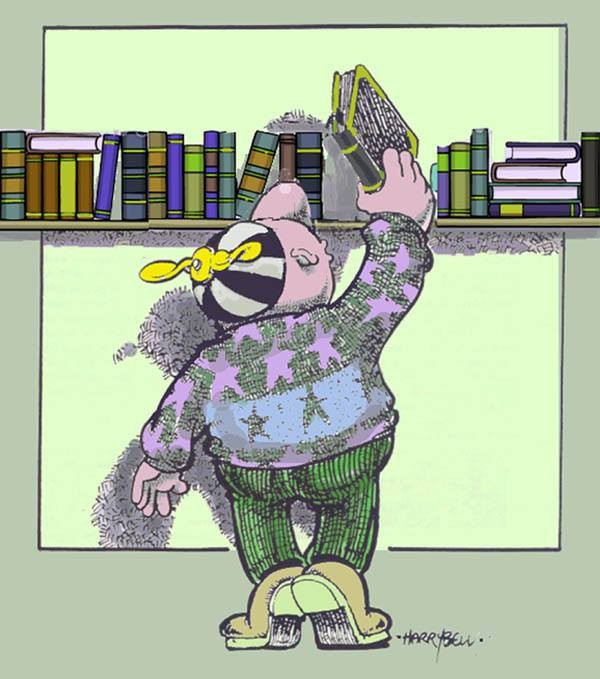
Cover art by Harry Bell - colored by the artist 13 years later, in 2014!
Interiors scanned from
The Ingoldsby Country (1),
Dan Leno - Hys
Booke (4), and three original cartoons by Phil Tortorici
This issue will be a bit early perhaps, but the box of IGOTS stuff is full
and I wanted to get it into the 30th anniversary SFPA mailing that closes at the
end of September.
I see that one thing mentioned last time was the Mae Strelkov book - alas,
after almost a year I have only retyped a bit over half of it into the computer.
What is typed in is all typeset though!
Life on the Moon in 1768 by Filippo Morghen, Harry Margary, Lympne
Castle, nr. Hythe, Kent CT21 4LQ, England.
With an introduction by Brian
Aldiss - which I suppose is why it got listed in Locus. I have lost the
Locus reference, so I don't remember what it cost - not cheap, at any
rate. And where do you put something over 16x12 inches? It is softbound, and
came rolled in a tube 4 inches in diameter - it isn't quite flat yet. Aldiss
notes that little is known of the Florentine artist Fillipo Morghen - apparently
not even how his name was spelled, as it differs between the cover and the
Introduction. The art in the ten plates is magnificent, very imaginative and
beautifully drawn, though having nothing to do with modern ideas of the nature
of the Moon - there are flying serpents used as beasts of burden, pumpkins used
as ships and houses, and a number of Rube Goldberg devices for transportation
and trapping.
Oddly enough, not long after getting this, I found a book with
an engraving of Lympne Castle:
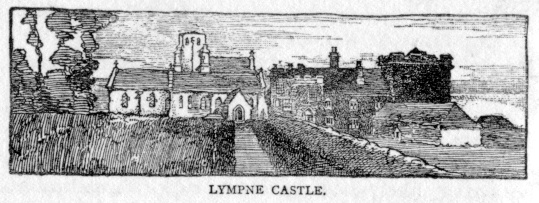
The
Ingoldsby Country by Charles G Harper, A&C Black, London, 1904. This is
an account of the legends and folktales from the region of England around
Canterbury - from Rye to Margate - that inspired the Rev. Richard Harris Barham
to write The Ingoldsby Legends, a famous book even before Arthur Rackham
illustrated it around 1900. Harper says that the origin of the odd spelling of
the name "Lympne" is unknown - it is called `Lim' and is at the mouth of the
River Limen. The engraving is reproduced here courtesy of computer scanner
technology, specifically a Marstek Mars 800 half-width hand scanner. It does
better on line art with shading of lesser density than this engraving, as we
will see further on in this issue.
L. Ron Hubbard presents Writers of the Future - Vol.VII edited by
Algis Budrys, Bridge Publications, Los Angeles, 1991, $5.95.
A very fat
(460pp) mass-market pb sent me as a review copy. This annual also serves as a
showcase for new artists, with Kelly Freas as the "Director of Illustration".
The stories run more to originality than style, but I suppose that is to be
expected in new writers. The art is dull, except for two pieces by Sergey
Poyarkov and Peter Francis that are quite excellent. {One of the neat things
about computer wordprocessing is that you can go back in and comment on
yourself... Two days after I wrote the first part of this paragraph, I got a
notice in the mail that Poyarkov had won top illustrator in the "Writers of the
Future" contest!}
Nature's God by Robert Anton Wilson, ROC/Penguin, NY'91, $4.99.
This is the third (but not, apparently, last) volume of the "Historical
Illuminatus Chronicles". I had read the first two, The Widow's Son and
The Earth Will Shake some time ago and was rather annoyed at the length
of time it took for this to appear. It is written in a looser style than the
first two (or my recollection of them), very episodic and occasionally careless
- a housemaid in 1776 refers to a lawn hose (p.17) in the modern suburban
sense, surely a gross anachronism. Still, I enjoyed it, as I have all of the
Illuminatus books.
I Can't Stay Long by Laurie Lee, Andre Deutsch, London, 1975.
Laurie Lee has long been one of my favorite writers, and it has taken me
years to acquire most of his books. This is a collection of essays and travel
tales that he says he published to clean up his study. All of it is good, but
the best is a piece called A Drink With A Witch, one of the eeriest
things I've ever read - quite like the best of the Arthur Machen things that are
lost in some nebulous region between journalism, fiction, and mysticism. There
is a frontispiece portrait of Lee - he looks very much like Ray Bradbury!
The Birthgrave by Tanith Lee, DAW, NY'75.
A used pb published
before I was interested in Tanith Lee - odd to think it was published the same
year as the other Lee book above. The George Barr frontispiece is uncredited. I
did not like this as well as her Flat Earth books, but it moves right
along. The blurb says that this "giant novel" was her "grand entry into
publication" - it isn't nearly as giant as her recent Blood of Roses that
runs over 600 pages. I wonder whether the attempt, at the end of The
Birthgrave, to `explain' all the fantasy with superscience, was Tanith Lee's
idea or something Don Wollheim wanted?
I have no idea where Hal Crowther's column appears other than in a local
give-away weekly, but I always enjoy it. On July 30 he took on the notion of
"politically correct" - and concludes that it is a "horrible phrase that reeks
of fascism and smug, crawly little minds". Right on, Hal...
I am not particularly surprised that there should be a $2,000 (well, $1,985)
edition of the Civil War stories of Ambrose Bierce - but how did I get on the
mailing list for the offer, which is a poster only slightly smaller than Rhode
Island? The David Page art looks very much like imitation Barry Moser. The title
is One Of The Missing (originally Tales of Soldiers and Civilians
when published in 1892) and the publisher is the Yolla Bolly Press.
For years I have made fun of a Dean Koontz novel - which I have lost, and
forgotten the title of - in which, quite near the front of the book, he had a
scene with "laser cannon spewing corrosive froth". Well, I fear I must
publically apologize and acknowledge Mr Koontz' prophetic powers - according to
an article in the July 1, 1991, issue of Aviation Week & Space
Technology (p.26), the `Alpha' device, said to be the first laser actually
capable of destroying a missile at 2000 miles range, is a chemical laser one of
whose by-products is free fluorine. The extremely corrosive fluorine is to be
handled by "three-stage steam ejectors and several chemical scrubbers" - so with
a little maladjustment, this laser cannon could certainly `spew corrosive
froth'!
I recently sold my collection of books by and about Aleister Crowley - I must
have been discouraged by not being able to get the ultimate collector's item,
the ashes of his cremation. A catalog from Michael Thompson (445 West Pender
Street, Vancouver, BC, Canada) offers at $750 a collection of letters about
these remains, but notes that the subject ashes seem to have been lost while in
transit to his spiritual heirs in Southern California. Most of the books in the
catalog are quite reasonably priced, though I don't seem to have spotted any I
couldn't do without.
Mount Analogue by Rene Daumal, Pantheon, NY, 1960.
I found this in
a great little bookstore in downtown Knoxville called The Incurable
Collector - probably the last shop of any use left in downtown Knoxville -
and the owner indicated that they weren't likely to be there much longer. A
wonderful fantasy subtitled Symbolically Authentic Non-Euclidean Adventures
in Mountain Climbing, translated from the French by Roger Shattuck, it was
unfortunately left unfinished at Daumal's death. Rudy Rucker might be able to
complete it.
Mystic Women Their Ancient Tales and Legends Recounted by a
Woman Inmate of the Calcutta Insane Asylum - with notes and commentaries by
Jessica Amanda Salmonson, Street of Crocodiles, Seattle, 1991.
A beautifully
designed and printed 45-page booklet - a religious text to some and radical
weirdness to others... I can't remember now whether I ordered this or they sent
it as a review copy, and I find no price on it. They note that the cover is
printed on a Kelsey table-top hand press - I once had one of those, but lacked
the patience to do this sort of work.
Kill The Dead by Tanith Lee, Legend, London, 1990.
This British pb
first appeared in 1980, but I just caught up with it on Ken Slater's list. It's
an excellent fantasy with an original premise - a hero whose profession is to
kill the dead, set in Lee's typical medievalish locale. But the mysterious thing
about it is the notice on the back of the title page (which I have seen in at
least one other Tanith Lee book):
The right of Tanith Lee to be
identified as the author of this work has been asserted by him (sic!) in
accordance with the Copyright, Designs and Patents Act, 1988.
Now just
what does that mean? Stylistically the book certainly seems to be by the same
hand as the Flat Earth and other Tanith Lee books.
The Leipzig Connection by Paolo Lionni, Delphi Schools, Sheridan,
Oregon, $4.95.
In a blurb that sounds like the plot from an
Illuminati novel, the decay of literacy in the US is traced to a
19th-century German psychologist named Wilhelm Wundt, whose behaviorist theories
were promoted in the US by a Baptist minister funded by Rockefeller millions.
One of the pieces of evidence presented to support this notion is a graph
showing a 10% drop in verbal SAT scores ("of all persons tested") that occured
more or less linearly between 1963 and 1980. I don't think we need Byzantine
plots to explain this drop - in the first place, this was the period over which
the first generation that grew up watching TV would be taking the SAT. And in
the second place, I would guess that this was a period during which a great many
more people took the SAT. In 1980 the curve levels off - is this to be
attributed to the election of Raygun Ronnie?
"UFOs to Invade Phoenix September 1991" - well, by the time you get
this you will know if the prediction by Inner Light (Box 753, New Brunswick, NJ
08901) came true. In an 8-page catalog they offer Ufology in the USSR, a rehash
of the US UFO cult, the unpublished prophecies of Nostradamus ("Black Prophecies
so dreaded they were supposed to be kept secret for all time!"), and, last but
not least, pyramidology - "You can become a SUPER-BEING". This last
includes a murky photograph of a "fire god" created with the powers gained from
perusal of this text. And you can get all four books for only $50! At least they
spelled my name right on the mailing label, which seems to be more than some
supposedly legitimate enterprises can manage.
American Psycho by Bret Easton Ellis, Vintage, NY, 1991.
A trade
pb that says `First Edition', and cost $11. I actually read this abomination,
just so that I could report on it to my readers... It runs to nearly 400 pages,
but there is no more content than could have been put in an unpleasant and
pointless short story about a yuppie who kills and tortures various people (or
imagines he does - it is never clear which). The rest of the verbiage is added
by describing in tedious and mind-numbing detail the model and brand name of
every consumer goodie that any of the yuppie characters wears, eats, drinks,
drives or uses. And as if this did not pad it out enough for novel length, an
occasional chapter is thrown in that consists entirely of commentary on some
utterly insignificant item of popular music.
Media Solutions, Inc apparently got my name and address from some fan
source, as they call me `Ned Brooks'. They are in Ft Walton Beach, Florida, and
are in the business of printing fanzines for fans. The mind boggles... They give
what they apparently consider a typical example - 200 copies of a 150-page zine
with 15 pages of art and a screened pencil-art cover. If you supply camera-ready
masters, they will print and bind this zine for you for $1,450 or thereabouts...
When The Black Lotus Blooms edited by Elizabeth A. Saunders,
Unnameable Press, Atlanta, 1990.
A beautifully designed and printed horror
anthology. It runs the full gamut from bizarre surrealism through pulp horror to
the lunatic parody of Jerry Page's Strange High Armadillo in the Mist. I
ordered this from an early offer and it took quite a while to appear - I kept
asking people in Atlanta, on my twice-yearly visits there, whether the
enterprise was still viable. But it was well worth the wait.
Mae Strelkov in the far NW boondocks of Argentina sent some of her remarkable
hectograph artwork of rural scenes - the colors are quite indescribable. I have
quite a lot of these, and cannot afford the color printing that would be
required to publish them. In fact, I'm not sure that even full process color
could capture these hues. If you are interested let me know and I'll send a
sample.
Jonathan Cowie at Concatenation (England) writes
Thanks again for It Goes On The Shelf 7. We are now
getting quite used to the odd sized paper US fanzines are printed on. {You
have it easier than we do, Jonathan - the British A4 things stick up from
my neat laundry baskets of standard-size zines.} It is interesting to
see/compare the different patterns of sf book publishing between the US &
UK. My hot tip to US readers of your zine from the UK is Colin Greenland's
Take Back Plenty a romping hard SF/new wave space opera. It went
out of print over here after 6 months but you guys will get your US edition
about now. {This is dated May'91 - I have seen nothing further about the
Greenland book.}
The Book of Jubilees translated from the Ethiopic by the Rev. George
H. Schodde, Artisan Sales, Thousand Oaks, Calif., 1980.
The publisher notes
that this is a reprint of an edition published by Goodrich in Oberlin, Ohio, in
1888. A sort of synopsis of the first five books of the Old Testament. The
introduction is extremely obscure as to the origin of the text. The odd thing is
that every word of the introduction and text, some 96 pages, has been underlined
in pencil! What can be the point of this? Underlining is generally thought of
marking some part of the text as more important than the rest.
Would You Believe...?
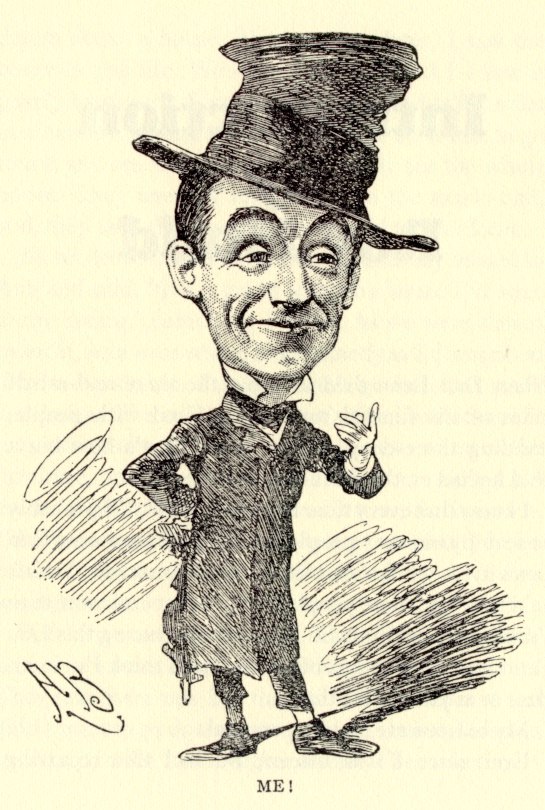
In spite of the
title above, the word `jubilee' actually derives from an old British music hall
act! The comedian Dan Leno (1861-1904) - perhaps an ancestor to the contemporary
Jay Leno, as the Sidney Sime caricature in his autobiography (Dan Leno, Hys
Booke by Himself, Evelyn, London, 1968, reprint from 1899) shows the same
long chin - was wont to come on stage and say "Would you believe...?", this to
be followed by some outrageous fantasy. He was very popular, and in due course
the crowd would begin to shout `would you believe' as soon as he appeared. This
phrase eventually degenerated into `jubilee' as an expression of general good
cheer. I will scan in four pictures of Dan Leno from the book mentioned above.
The second - the one where he has a topknot like Martin Short's "Ed Grimley"
character - is probably based on a photo. The last two are Sime caricatures, one
of him as Hamlet and `Poor Yorick' as a dead rat, and the other of him as `The
Widow Twankey'.
I see that that ultimate compendium of radical weirdness, Mike Gunderloy's
Factsheet Five, has a new publisher, and review copies should go to him:
Hudson Luce, Box 1163, Cincinnati OH 45201-1163. Unless this notice, mailed in
Rensselaer NY on August 21, is a hoax - how is Gunderloy to review zines that
are in Cincinnati? He specifically says he will continue to review. Weird...

Ray Zorn returns the Mae Strelkov Trip Report that I sent him some 15
years ago - Mae crossed the US by bus to attend the 1974 worldcon in Washington
DC - as he is trying to reduce the size of his collection. I would not like to
see this practice become common among all the people I have sent zines to over
the years... Ray also says he has a recording of himself reading his Nine
Poems of the Weird into a wire recorder, but no longer has the machine. I
offered to transcribe the wire recording to cassette for him - I have a working
wire recorder but nothing to play on it - but he decided that posterity could
manage without his dulcet tones. He also sent a copy from The Fossil of
the account of Mike Horvat's epic journey to Roanoke Virginia to recover the
amateur journalism collection of the late Willametta Keffer - 137 cartons of
fanzines were shipped back to the NAPA archives in Stayton Oregon - and incloses
a membership application proposing me for membership in The Fossils. Well, maybe
when I'm older...
Baroque Tales of Chile by Henry Lyon Young, Stockwell, Ilfracombe,
Devon, 1963.
I ran across this title in a catalog. The book was published
ten years after I left Chile - I lived there from 1946 to 1953 - but the tales
date from the early 1900s and before. The author was born in Valparaiso in 1909,
so he was about the same age when the book was published as I am now... Probably
the most baroque of the five tales is La Quintrala - the name by which
Doña Catalina de los Rios y Lisperguer was known. She had Indian blood and
flaming red hair and her paternal grandmother had been beheaded as a witch. She
was one of the richest women in the country, both by inheritance and marriage,
and was said to have tortured several people to death for the thrill of it. When
she died - her will is dated May 10, 1662 - she left most of her fortune to the
Church so that 25,000 masses might be said for the salvation of her soul.
The decorative borders on this issue might be called "The Square Dance of the
Cellular Automata". I created them using one of the many versions I have written
of the `Game of Life' program devised by the University of Cambridge
mathematician John Horton Conway - Ken Ozanne and a few other readers probably
recognized the patterns at once.
One of the latest of these programs is the
most interesting - it starts from a pattern of random position and density
(using a randomizer with the clock as seed) - and I have noticed that both the
simple `archway' (four of them form the pattern at the bottom left of page 1)
and the famous `glider', which moves across the screen at a 45 degree angle,
arise spontaneously with considerable frequency. This is somewhat analogous to
life arising spontaneously from the hypothetical `soup' of the Earth's ancient
seas. [NB - Alas, I cannot see any way to reproduce this effect in the HTML
version of this zine]
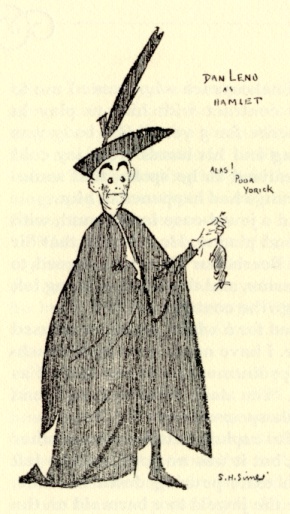
A catalog from a local shop that rents both videos and software notes that
the Senate voted for a bill that would prohibit software rentals without
permission of the original publisher - anybody know the status of this
legislation?
The Progressive for May'91 notes that the propaganda campaign leading
to Bush's Arabian Adventure was created by the public relations firm Hill &
Knowlton, under a contract from a group of wealthy Kuwaitis that earned H&K
$5.6 million between August 20 and November 10 of 1990, and ultimately about $11
million.
The Life of Isambard Kingdom Brunel by Isambard Brunel, Fairleigh
Dickinson University Press, Teaneck, NJ, 1972.
A reprint of the 1870 edition
from Longmans Green - and the reprint is now out of print, I think. I got
interested in Brunel as the builder of the ship Great Eastern. The other
interesting item in this extremely long and turgid biography by his son is the
account of the "atmospheric railway" - a scheme by which a train could be pulled
along without an locomotive, propelled by atmospheric pressure on a cylinder in
a tube between the tracks. The tube was evacuated by a stationary engine of a
type originally built to pump water out of mines. The story of this peculiar
railway - which actually operated for a short time - is told much better in Walt
Willis' The Rats That Ate The Railroad chapter in Bergeron's fanzine
Warhoon and the book The Improbable Irish. The tube had to have a
slot for an arm to connect the cylinder to the train - and the slot had to be
sealed to hold the vacuum - but all they had was leather (neoprene was still a
hundred years in the future), and the rats would eat the leather...
A Syd Mygx (Box 32, 52 Call Lane, Leeds LS1 6DT) sends a pamphlet of his
poetry on which he notes "WRITING!? You want to know what writing is? A way to
kill TIME when you're waiting for something to happen, so you don't feel
useless." Could be...
The Radio Papers by Lorenzo Wilson Milam, Mho & Mho Works, San
Diego, 1986, $9.95 (trade pb).
May still be in print. I think this was a
book that I got because the Fessenden Review folded owing me sub money
and they said they would send some books instead. It was a good zine too, I was
sorry to see it fold. Lots of weird details of things I wouldn't have even
thought about otherwise, and some good photo art. It was endowed by the estate
of an early radio pioneer named Fessenden. But this book is about the ideas
behind small left-wing radio stations and the problems of operating them - a
series of rather disconnected short chapters dated from the '60s through the
'80s. In between are excellent photographs of radio equipment of the '20s and
'30s.
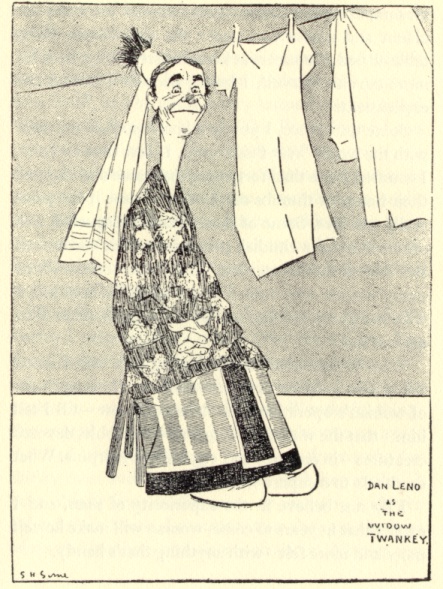
The Petition Against God by Pastor A. W. Allworthy, Christ the Light,
Dallas, 1976, $7.95 (8x8-inch pb).
As far as I can make out the legalistic
mumbo-jumbo, Mr Milam (of the title above) and a Jeremy Lansman filed a petition
with the FCC to change the rules under which non-profit educational-license
stations get their permits so as to prevent the radio evangelists from getting
all of the available slots. Whether this was a legitimate concern, I have no
idea - it may have been in some places, though I saw no sign of it here or in
Atlanta, the only places I have spent much time listening to the radio. At any
rate, the news of this petition was used as propaganda by the Fundamentalists,
and resulted in the FCC getting some 4 million letters on the subject. This book
reprints the relevant documents in the case. But are `Allworthy' and `Christ the
Light' for real or strawmen set up to market this book? I rather suspect the
latter.
Joe M. Singer at Mother of Ashes Press in Harrison, Idaho, who publishes both
The Printer's Devil (which is about typography and printing practice) and
The Village iDiot (which is more literary) sends a 3-page loc - neatly
hand-printed. I guess these cold-type people got no typewriter, much less a
word-processor... Just kidding there - blame it on the poison ivy. Joe asks if I
wanted to be listed as a place people should send zines for review - I forget
what I told him. I guess I should be listed as long as it's understood that I
won't review anything if I can't think of something interesting to say about it.
Joe also goes into the question of the typographical errors that I noted lastish
in Year of the Pigeons and my comment that 1963 was rather late for a
mass-market book to be done with hand-set type. Apparently this is a marginal
matter - Singer certainly knows more about it than I do - and a British
mass-market book in 1963 could still have been hand-set. That's certainly what
the typoes looked like.
I see that I also have a letter from Bill Danner (SteFantasy)
indicating that he thinks - after seeing some xeroxes I sent - that Year of
the Pigeons is hand-set. Bill is 84, and uses a press made the year he was
born! I suppose I must have a typewriter from about the year I was born (or
thereabouts - except for the productions statistics in Beeching's Century of
the Typewriter, dating a typewriter exactly to 1938 would be a doubtful
business), but I'm not likely to be publishing with it when I'm 84! In another
letter, Bill notes that his Century dictionary not only defines the word
shadoof mentioned as appearing in the mysterious Number Dictionary
mentioned lastish, but illustrates it. If you must know, it's a primitive
irrigation device used in Egypt, consisting of a bucket at the end of a
counterbalanced pole.
Roland Trenary writes to say that he likes IGOTS even when he can't
understand it... Says he does 100-slide shows on Mahlon Blaine art at MiniCon,
the Minneapolis regional - wish I could see one! He mentions the possibility of
a more complete Blaine bibliography than the one he had in Legman's The Art
of Mahlon Blaine (Peregrine, no place, 1982) - I would buy it!
Beyond the Enchanted Duplicator... To the Enchanted Convention by Walt
Willis & James White, PROmote, Minneapolis, 1991. Illustrated by Stu
Shiffman.
This is available in the US for $6 (standard edition) or $15
(mimeographed, autographed edition) from Geri Sullivan, 3444 Blaisdell Avenue
South, Minneapolis MN 55408-4315; or 3 and 8 pounds from A Vincent Clarke, 16
Wendover Way, Welling, Kent DA16 2BN, England. Willis' Preface is a short
publishing history of the legendary Enchanted Duplicator. I suppose it
has been twenty years or more since I read The Enchanted Duplicator, and
I could not help but wonder whether this sort of thing would still work - but it
does, at least for me. Something like a Pilgrim's Progress written by
James Branch Cabell, but it works... The Shiffman art is exactly right too.
Underwater Logging by John E. Cayford and Ronald E. Scott, Cornell
Maritime Press, Centerville, Md, 1964, $3.
No, I don't have this booklet
(81pp), and not likely to unless I should run across it at a sale. But it is
fascinating to run across odd ideas - the authors claim that "millions" of
first-grade logs lie on lake and river bottoms, having sunk on their way to the
sawmill, and are still usable as lumber. They themselves are experienced divers,
active in the log salvage business, and reveal here all the details of the
business. The mind boggles...
Michael McKenny mentions a book called The Devil's Maze by Gerald
Surter (or `Suster', it's handrot on a Christmas card) that is a continuation of
Arthur Machen's The Three Imposters. I would like to get a copy of this
book!
Cathy Doyle writes that she can die happy now that she has had a letter
published in IGOTS - I'm not sure if this is flattery or sarcasm... You know how
librarians are... After my battle with the Hampton library to be allowed to see
the Cumulative Book Index, she notes that she looked (for the
Missionary Endeavour in China that Mae Strelkov wants) in the copy at her
library just before they were thrown out! Great Ghu - cluttered as it is
here, I could have found room for a copy of the CBI, which lists almost every
book ever published in the US, and some that weren't.
A Model of Functional Art / A New Diary / Another Diary by Fa
Poonvoralak (1387/6 Tak Sin Road, Bukkalo Bangkok, Thailand).
These booklets
are by the `same' person as the Vichien Poonvoralak whose Book of Ordinary
Writings was reviewed in a previous issue - he changed his name as of
January 12, 1990. To read these things is to peer bemusedly into an improbable
obscurity. I must quote the dedication in the last book listed above, Another
Diary - "Half of my writhings have been inspired by the thought of Padunsak
Kamparat". Is this a Snearial inspired typo or mere carelessness or intentional
humor or what? Or perhaps (as Fa is also a mathematician), an acknowledgement of
Lewis Carroll, whose Mock Turtle started his Regular Course in school by
learning Reeling and Writhing.
JFA (Journal of the Fantastic in the Arts) sent their V.3#1 "Special
Art Edition" - a very academic sort of thing from Orion Publishing (3959 Route
31, Suite 210, Liverpool NY 13090). Alas, the art is also very academic - their
only idea of fantasy art seems to be obscurantist surrealism or kitsch. Of the
31 pieces of art in the zine, there isn't one that I would ever care to see
again - or even one so grotesque I wished I hadn't seen it the first time.
Walt Willis writes (yeah, I know I haven't been printing letters verbatim
this time around, but I would not want to deprive my readers of the full effect
of this fannish blarney):
Thank you for IGOTS #7, that unfailing harbinger of Spring. If Shakespeare
had been on your mailing list he would no doubt of given due credit to it
instead of to the daffodil for coming before the swallow dared. The amended
verse would have read quite well, I think, conveying a vivid picture of a flurry
of IGOTS sweeping through barren fandom, breeding l.o.c.'s out of the dead land.
I enjoyed this issue just as much as previous ones. My pleasure in reading
it was only slightly alloyed by the realization that I have only read one of the
book that you review, Flann O'Brien's The Poor Mouth, and that I
haven't anything helpful to say about even that. I believe the book was actually
written in Irish, O'Brien being bilingual; he made up to some extent for the
generality of Southern Irish who, as a result of compulsory Irish teaching in
schools, have been with some justice accused of being illiterate in two
languages. I think The Poor Mouth is a sort of peatbog equivalent
of Cold Comfort Farm, but like you I have never read any examples
of the genre that the author satirizes. There is a sort of cultural apartheid in
Ireland, and I belong to the Protestant literary tradition, the one which
created the myth of Irish nationalism and has been regretting it ever since.
{I was surprised, knowing O'Brien was bilingual, to see that not only was the
book written in Irish, someone else translated it. I agree with you about the
resemblance to Cold Comfort Farm, but it lacked the charm.}
I did
learn some Irish once, attending evening classes at the Ard Scoil on the Lower
Falls Road. I was probably the only Protestant ever seen there, and was regarded
with some suspicion. When I unguardedly revealed that I could play chess, a
board and men were miraculously produced and I was challenged on the spot to a
game by a youth who was apparently some sort of local grand master. At that time
I barely knew the moves, and my situation seemed hopeless. In desperation I
tried Scholar's Mate, a trap so elementary that an expert might overlook it.
Amazingly this proved to be the case, and the game was over in four moves.
Trying not to look as if I thought the opposition was beneath me, I declined the
desperate offer of a return match, and departed rapidly for the safety of the
Protestant heartland, leaving a stunned audience. I thought you might like to
know that while you may not have Shakespeare among your readers, you do have the
chess champion of the Lower Falls. {My brother and I may have been the only
Protestants at the Ecole Francais in Concepcion Chile - but we were more
of a Curiosity than the Opposition. Speaking of contrasting social mores,
I recently saw a newspaper article noting that an 11-year-old boy in Baltimore
had been taken into custody after several incidents in which he robbed other
children at gunpoint. One of his robberies was of a propellor beanie,
said to be the current rage among the Baltimore preteens!}
I have found
that when someone else publishes one's stuff other than in a magazine, very few
people ever write to you about it. So I very appreciated your notice in IGOTS,
and your earlier letter. {Look forward to seeing you in Orlando next year!}
Kathryn Whitworth/Roth - wife of Mark Roth, a fan I first met years ago in
Philadelphia - sends a xerox of a page from the 1989 Standard Periodical
Directory, where at the bottom of p.1456, between Isaac Asimov's SF
Magazine and something called Locus, is a listing for IGOTS.
All pretty near correct, though "Color Jour." is obscure. Maybe this is why I
get letters from Kathmandu and Iran... I have a vague notion that I put this
information on a questionaire once, but I never saw the listing before. I see
that this page, which is from a "Science Fiction & Fantasy" section, also
lists DENSA Times from the Densa Society of Dallas - a mirror image of
Mensa? - File 770, First Fandom Magazine from Lynn Hickman, lots I
never heard of, and some, like Nyctalops and Pretentious Science
Fiction Quarterly, that have folded.
Marty Helgesen says he will trade me his Radio Free Thulcandra for
IGOTS and quotes a rant in the San Francisco News Letter from a newspaper
feud of 1868: "We regard the Chronicle's atrocious correspondent as an
infernal fiend, a false-tongued midnight monster, a red-handed assassin, a
thief, a he school marm, a fraud, a ghost, and an unpleasant person! We esteem
him a pea-green demon of the steaming pit, with a cottonwood tail, eyes in his
sides and a cork neck studded with hot door-knobs! If there is anything worse
than this, we think him that."
Ruth Berman writes that Salman Rushdie's Midnight's Children is a
fantasy with an odd premise - the children born in India in its first hour of
life as an independent nation find that they are in telepathic contact with each
other, and grow up to have other ESP powers. There is some question in my mind
whether India would not have been better off to remain part of the British
Empire, they don't seem to have been a spectacular success as a nation.
Ruth
also wonders if the new Adventures of Doctor Eszterhazy (Owlswick,
Philadelphia, 1990) will use the George Barr art from the magazine appearances -
I probably never saw this art, as I only get F&SF these days and it
has no interior art. In any case, the new book has only a Barr d/w (haven't seen
that much Barr color work lately), the interiors are little decorative cuts by
Todd Cameron Hamilton - not bad, but he's not in the same league with Barr or
Kirk. Ruth say she wishes some publisher would collect the "Unhistory" articles
with the Jack Gaughan art - I don't know about the Gaughan art, but Owlswick
solicited advance orders on the "Unhistory" collection in the same flyer with
the Dr Eszterhazy book and I think they were both supposed to come out this
year, but the Unhistory book is delayed for some reason.

Dave Hall writes:
Tell them great fandom is dead!
Thanks for the
IGOTS, I enjoyed it and the illos were great, but unfortunately the more you
tried not to, the more you put forth the news that fandom is dead yourself. Of
course this is a bit mispoken. Obviously the clubs are not dead, or the
conventions; but they are bread and circuses. The apas are not dead either. Only
fanzine fandom, maybe genzine fandom is dead. Only amateur
fandom is dead. You tolled the death knell three times yourself; once when you
spoke of Terry Carr's "posthumous" fanzine, once when you quoted me, and once
when you quoted Don Franson. Dead people do not put out fanzines, and anything
that costs $6 is not a fanzine anyway, and I know the guy whose address you
gave, he's ok, but he's part of the Vanguard bunch and they ain't good for
nuthin' unless you want mutton. It looks to me like Mark Manning is the only
real fanzine publisher in the world {What am I, chopped liver?}; notice
he doesn't take dirty cash for it; I wonder what the maniac's story is? I almost
feel like contacting him.
Meanwhile while I'm at it, where are all the kids
who ought to be entering fandom in droves? Avram asked this at the last
NorWesCon but no one paid any attention to him. {Avram is right... Someone
is SFPA noted that we have no teenage members - of course, SFPA has such a long
waitlist that if a teenager got on it he would be eligible to vote before he got
in (I use `he' in the general sense - the last teenage member of SFPA was Lon
Atkins' daughter Dawn, who was put on the waitlist at birth, or soon after). But
the other apa I'm in, Slanapa, is open to new members. I fear that the current
teenager is not very literate, probably from too much TV.}
Anita Cole asks "Do you read the current stuff that is common like
Seti by Frederick Fichman, and just choose not to mention it, or do you
only read the things you review?". Well - I never read anything common, but on
the other hand I never heard of Fichman or his Seti, so it can't be all
that common... I read lots of stuff that I don't review - what gets thrown in
the box to review are things I have read and was not only impressed by but felt
I had something to say about, and things I haven't read yet but was impressed by
the very existence of.
Much thanks to Fred Lerner for sending a xerox from the Oct. 22 1990 AB
Bookman's Weekly called Arthur Machen: The Forgotten Fantasist by
Harlan L. Umansky. I don't know that I would agree with the title, but it's a
good informative article - failing only in being a bit snide; and in failing to
mention my Machen publications.
Joe Mayhew, a fan I first met at a con back in the 70s - or perhaps, Ghu
knows, the 60s - has become Joseph T. Mayhew, "Recommending Officer for Science
Fiction" with the Library of Congress. But what does "Hispanic Acquisitions
(E&G)" mean? Can he only recommend Hispanic science fiction, or science
fiction suitable for Hispanics? He notes that the SF program he is responsible
for is new, and that they need to define a `canon' of SF writers whose works
should be in a serious research library - he plans to circulate a proto-list. I
suspect that a canon can be aimed in many directions - though only one at a time
- but may blow up in the gunner's face if he stuffs too much crap in it. This
particular canon seems to have missed fire, I have heard no further report from
it...
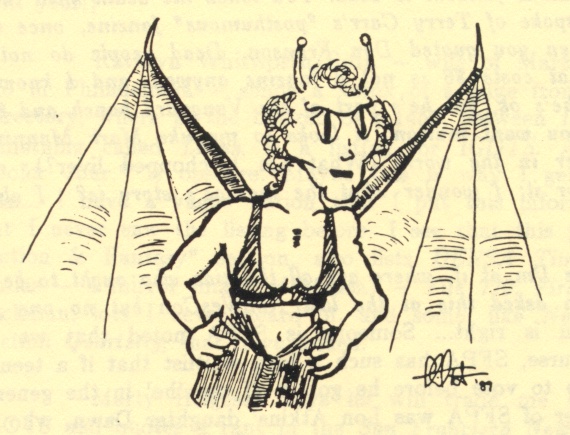
Hu Man by Dr. Jerry L Rothermel, S.O.M. Publishing, Windyville MO,
1987, $5.95.
The rest of the address is H.C.R. 1, Box 15, zip 65783. This is
the second printing, the first was in 1982. It seems most fit that the School
of Metaphysics, which is what `S.O.M.' stands for, should be in
Windyville... Rothermel (DM, DD, PsD) is founder and Chairman of the Board, and
has a photo in the back and 8 other titles offered, the rest seem not to be
novels. This novel increased in price by a dollar between the cover and the list
- but what's a $ between metaphysicians?
But enough badinage, we are here to
review this 207-page novel... A foreword by Frank Farmer (somewhat further down
the list of authors in the back) says that this is "the perfect Metaphysical
Novel". I don't know what that means. To me it seems to consist of equal parts
of pathetically silly science and turgid fiction. None of the characters seem to
rise above the level of straw men, and none of their ideas make much sense.
Still, even such a book as this has its place - as a bad example.
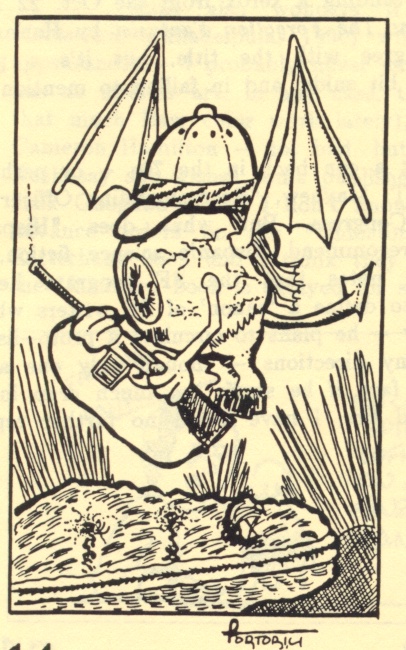
Typing completed August 24, 1991 -
Merry Christmas to All
And a Happy New Year!
Return to INDEX








